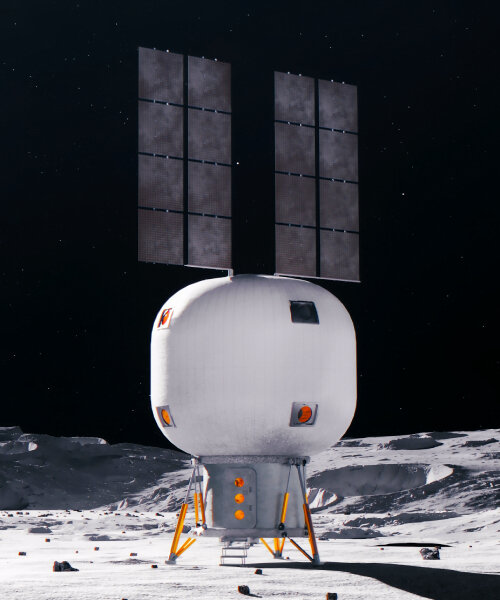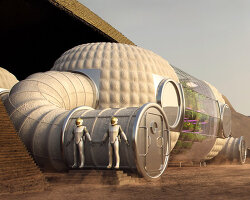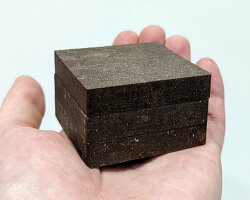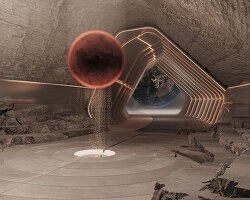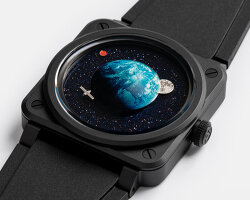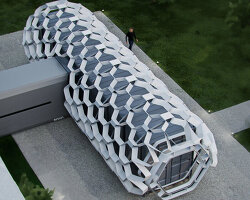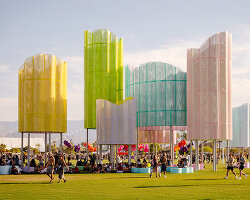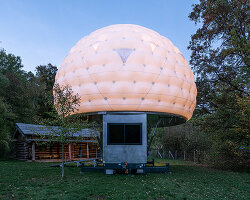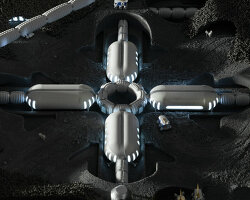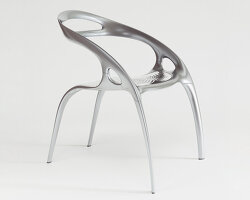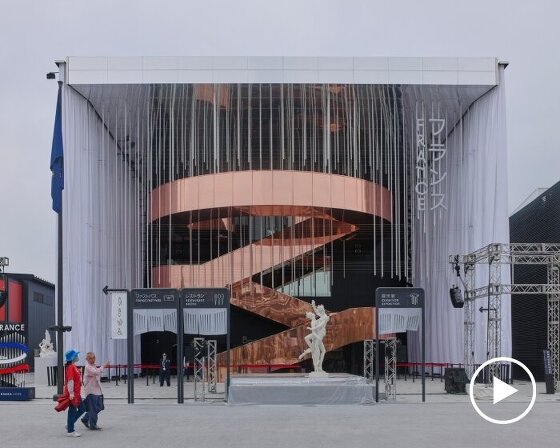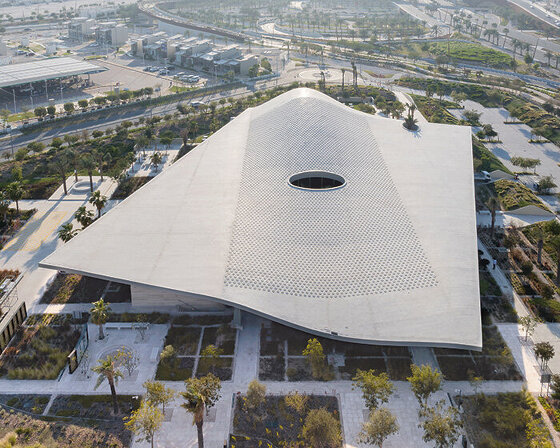Max Space’s Inflatable space habitats
Inflatable habitats and stations in outer space fascinate Aaron Kemmer and Maxim de Jong of Max Space, enough to propel them into decades-long research which has now resulted in expandable architecture that can grow as big as stadiums outside Earth. These inflatable pressure vessels are tightly packed and stowed on a rocket before they get deployed in space, slowly becoming high-strength, rigid architecture as the air flows in.
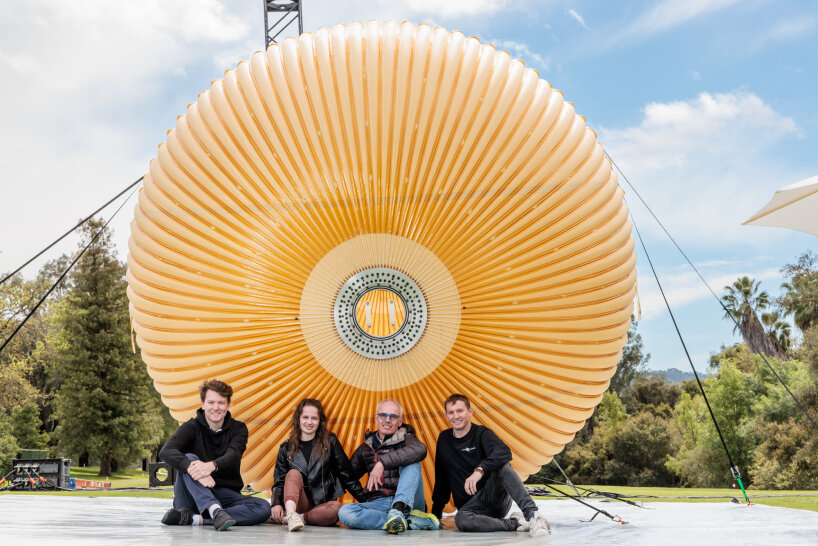
images courtesy of Max Space
Out of earth with spaceX in 2026
The resulting inflatable architecture can allow humans to live, work, conduct research, manufacture products, boost space tourism, and hold sports and concerts, all while in outer space. During the Space Symposium at The Broadmoor in Colorado Springs, Max Space’s co-founder Aaron Kemmer shared details about the team’s plan to bring their expandable modules out of Earth with SpaceX in 2026.

Having a series of scalable and inflatable space habitats, ranging from 20 m³ to 100 m³ initially, then up to over 10,000 m³ by 2030, Max Space believes that the potential scaling up of their expandable architecture can be to over 10,000 m³ or megastructures. These scalable modules and stations are dubbed to be readily adaptable to Low Earth Orbit, cislunar space, the Moon, and ultimately Mars.
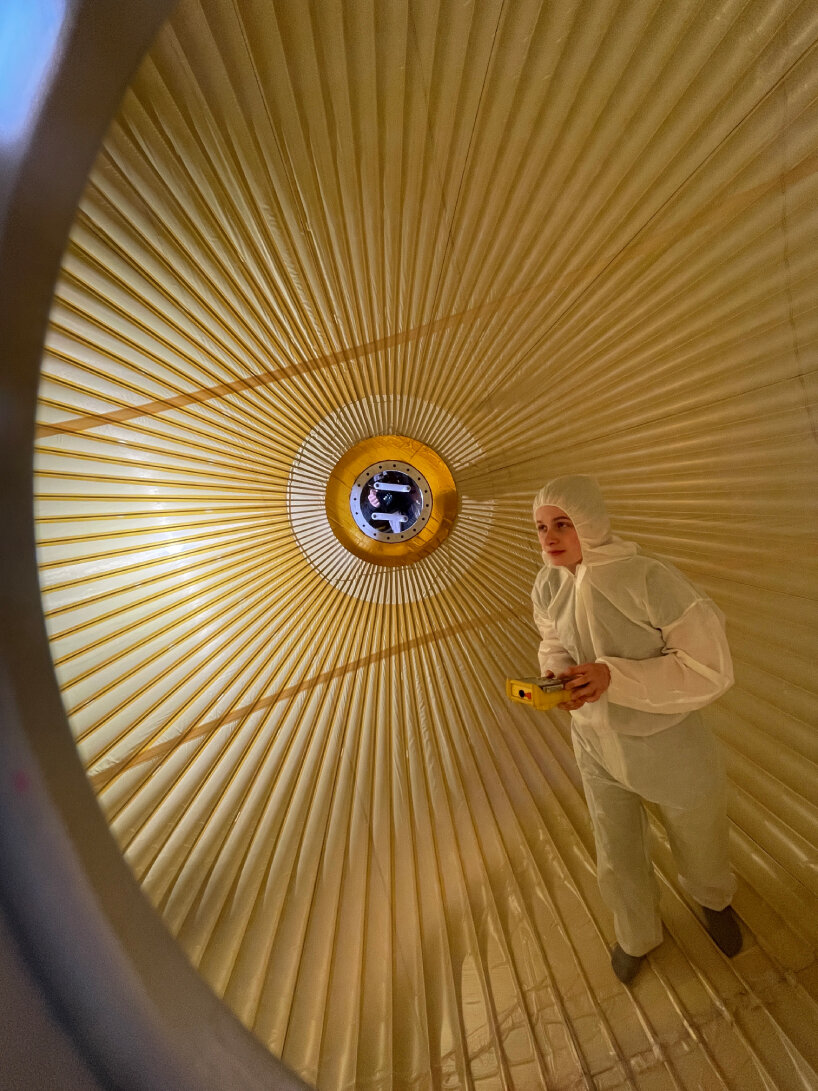
accessible human exploration, research, and more in space
Max Space adds that these expandable space stations and habitats can shred millions from the typical required funds to construct similar structures, which can allow for more accessible human exploration, research, manufacturing, and even entertainment in space. To give some background on the designers, co-founder Maxim De Jong designed and built the first two inflatable spacecraft pressure hulls around 20 years ago, the Genesis I and II. ‘And they are still orbiting Earth to this day,’ he says.

Maxim De Jong, who has participated in NASA programs focusing on space habitation, Planetary Entry Descent and Landing, and spacecraft shielding, adds that ’despite their success, we realized we couldn’t efficiently scale up to the bigger sizes that we really needed in space. So, after both Genesis craft flew, I took an entirely different design path to ultimately develop an expandable architecture that is fundamentally predictable and infinitely scalable.’
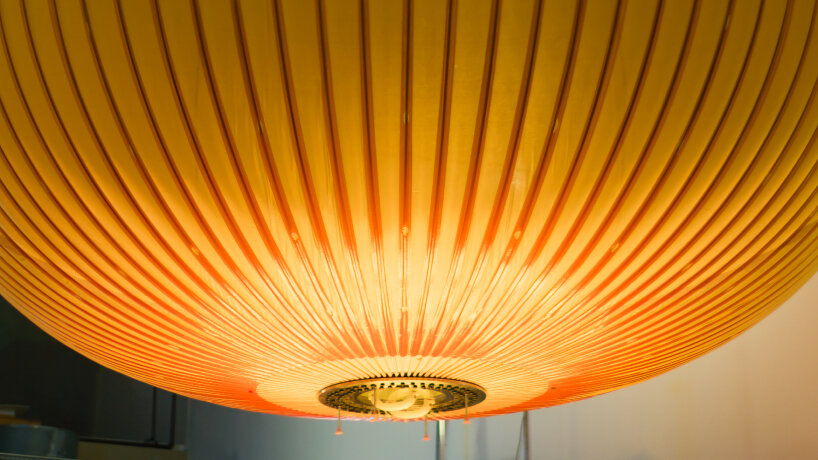
Max Space’s co-founder Aaron Kemmer echoes Maxim De Jong’s statement, saying, ‘The problem with space today is there isn’t enough habitable space in space. Unless we make usable space in space a lot less expensive and much larger, humanity’s future in space will remain limited.’ Around 25 years of innovation and research were invested in developing these inflatable space habitats.
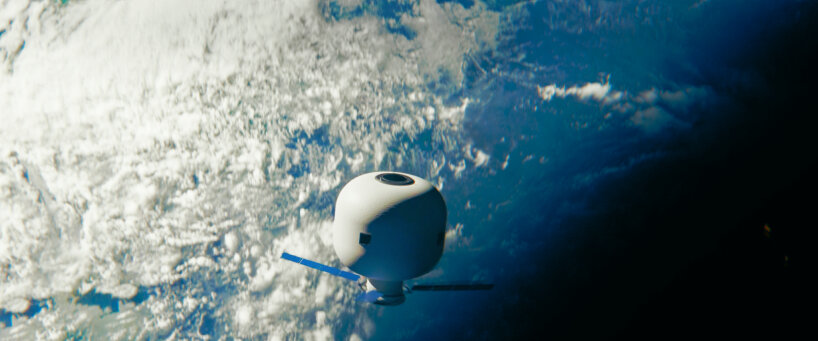
The Max Space team is said to have come up with a design that can have the lowest mass compared to other pressurized architectures for the same purpose – including expandable modules in aluminum, titanium, and composite structures – all while cutting back on production costs. The team said that the International Space Station’s Bigelow Expandable Activity Module took more than 40 flights and cost more than 100 billion USD to build. Max Space believes it can provide the equivalent cubic volume in space for 200 million USD, including the launch.
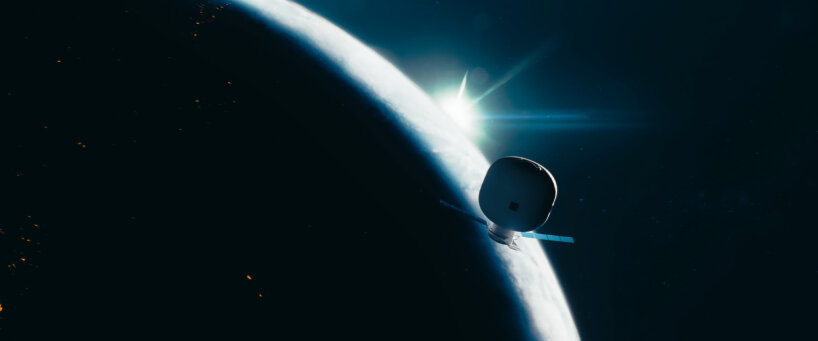
these inflatable pressure vessels are tightly packed and stowed on a rocket

Max Space’s inflatable space habitats can be expanded up to over 10,000 m³
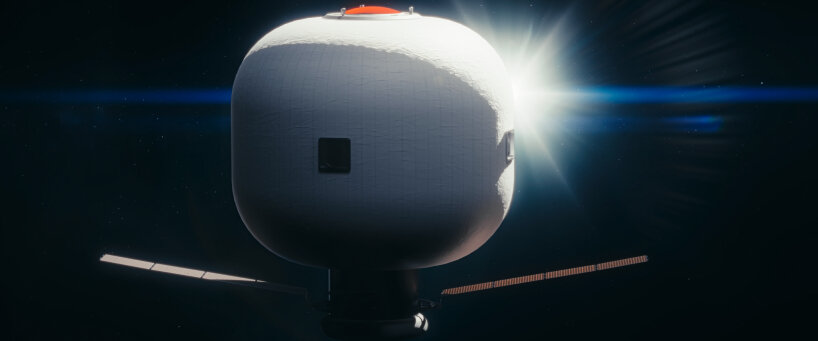
the inflatable architecture can allow humans to live, work, conduct research and more in outer space

these inflatable space stations slowly become high-strength rigid architecture as the air flows in
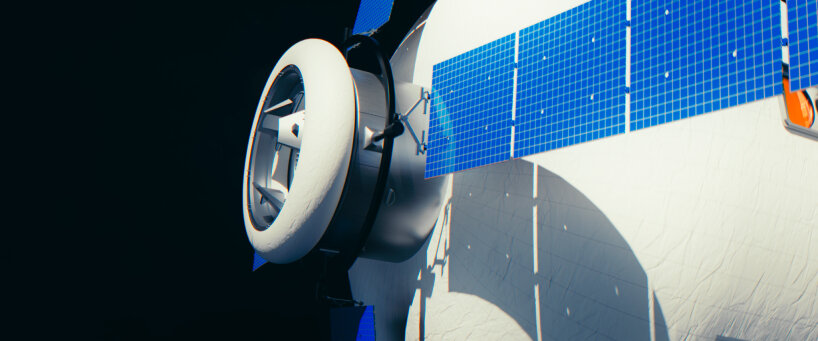
detailed view

these scalable modules and stations are dubbed to be readily adaptable to the Moon and Mars
project info:
name: Inflatable space habitats
design: Max Space
founders: Maxim De Jong, Aaron Kemmer
